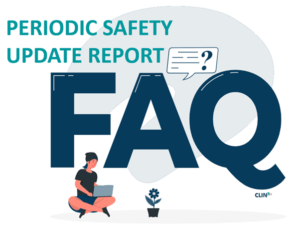Periodic Safety Update Report FAQ

Q: What is a Periodic Safety Update Report (PSUR)?
A: A Periodic Safety Update Report (PSUR) is a requirement under the EU MDR and IVDR for medical devices. It is a report that provides information on the post-market performance and safety of medical devices, similar to what has been required for pharmaceutical products.
Q: Which devices require a PSUR or PMSR?
A: All medical devices require either a PSUR or a Post-Market Surveillance Report (PMSR) based on their risk classification. Low-risk devices do not need a PSUR but must have a PMSR. Moderate and high-risk devices, as well as Class C and D IVDs, must have a PSUR.
Q: What's the difference between a PSUR and a PMSR?
A: A PMSR summarizes the results and conclusions of post-market surveillance data, along with any corrective actions taken, and is required for low-risk devices. On the other hand, a PSUR is much more detailed and extensive, required for moderate and high-risk devices, and provides a comprehensive update on the benefit-risk determination, post-market clinical follow-up (PMCF) findings, and other population and usage-related data.
Q: What are the requirements for PSURs?
A: High-risk devices and Class C and D IVDs must update PSURs annually, even if their certification is for a two-year period. PSURs for Class III devices and Class C and D IVDs must be submitted to Notified Bodies (NBs) via an electronic system, with NBs providing their evaluation and any actions taken. PSURs for other classes must be made available to the NBs involved in the conformity assessment and, upon request, to competent authorities.
Q: What should be included in a PSUR?
A: The PSUR must include the conclusions of the benefit-risk determination, main findings of the PMCF, and the volume of sales of the device along with an estimate evaluation of the size and characteristics of the population using the device, and where possible, the frequency of usage. However, a more comprehensive level of analysis beyond these sections is necessary to make the PSUR meaningful.
Q: How can manufacturers create a compliant PSUR?
A: Manufacturers should define the objective of the PSUR to improve devices and have a complete picture of their post-market performance. Data should be collected, and improvements should be made, with a focus on obtaining the safety big picture. Manufacturers should collate and analyse data from multiple sources, and write the report based on regulations and relevant guidance documents.
Q: How important is data analysis in a PSUR?
A: Data analysis is crucial to identify trends and understand the implications for the device’s performance. Notified Bodies expect detailed analysis in the PSURs, so taking the time to perform efficient analysis can reduce queries and enhance compliance. Manufacturers should identify data sources, use common terminology among all systems that capture data, know how to access the data sources, identify experts for queries, ensure part numbers align between systems, and understand data exporting limits of each system.
Q: What should be included in the PSUR report?
A: The PSUR report should cover the most common or severe device problems, include a record of all complaint reasons, and provide as much relevant data as possible. It’s essential to connect the dots and ensure consistent administrative data throughout the documentation.
Related Articles
